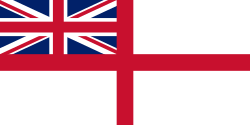This is a list of gunboat [note 1] and gunvessel [note 2] classes of the Royal Navy.
Contents
- Steam gunboats
- Wooden paddle gunboats (Indian service)
- Wooden paddle gunboats (Great Lakes)
- Iron paddle gunboat (Great Lakes)
- Iron paddle despatch vessels/gunboats
- Wooden screw gunboats
- Composite screw gunboats
- Armoured gunboats
- Iron coastal gunboats
- Steel coastal gunboats
- Torpedo ram
- Torpedo gunboats
- Steel gunboats
- River gunboats
- Steam gunvessels
- Wooden paddle gunvessels
- Iron paddle gunvessels
- Wooden screw gunvessels
- Composite screw gunvessels
- Steel torpedo-and-gunvessels
- See also
- Notes
- References
For gun-brigs see List of gun-brigs of the Royal Navy.
